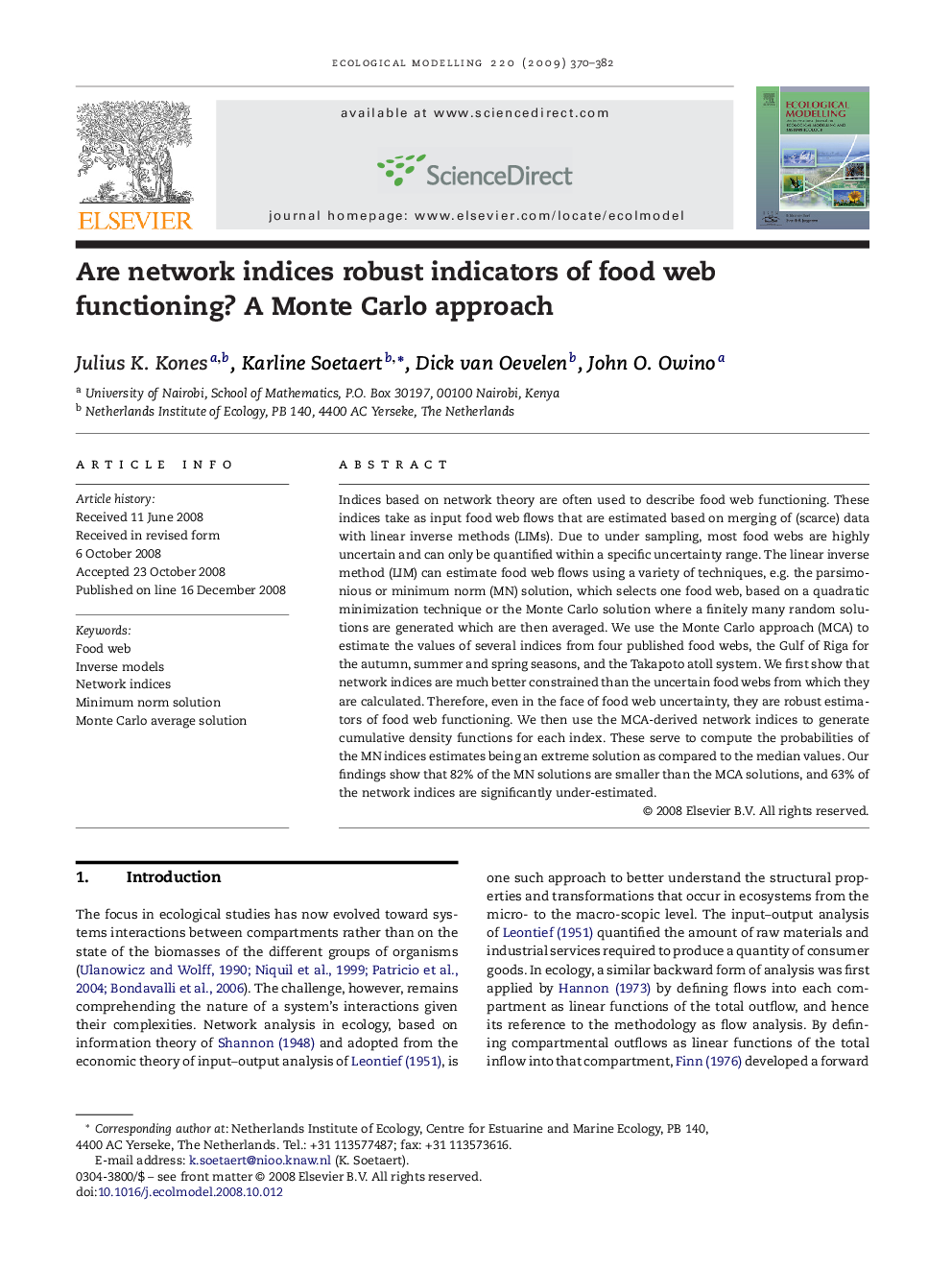| Article ID | Journal | Published Year | Pages | File Type |
|---|---|---|---|---|
| 4378289 | Ecological Modelling | 2009 | 13 Pages |
Indices based on network theory are often used to describe food web functioning. These indices take as input food web flows that are estimated based on merging of (scarce) data with linear inverse methods (LIMs). Due to under sampling, most food webs are highly uncertain and can only be quantified within a specific uncertainty range. The linear inverse method (LIM) can estimate food web flows using a variety of techniques, e.g. the parsimonious or minimum norm (MN) solution, which selects one food web, based on a quadratic minimization technique or the Monte Carlo solution where a finitely many random solutions are generated which are then averaged. We use the Monte Carlo approach (MCA) to estimate the values of several indices from four published food webs, the Gulf of Riga for the autumn, summer and spring seasons, and the Takapoto atoll system. We first show that network indices are much better constrained than the uncertain food webs from which they are calculated. Therefore, even in the face of food web uncertainty, they are robust estimators of food web functioning. We then use the MCA-derived network indices to generate cumulative density functions for each index. These serve to compute the probabilities of the MN indices estimates being an extreme solution as compared to the median values. Our findings show that 82% of the MN solutions are smaller than the MCA solutions, and 63% of the network indices are significantly under-estimated.
